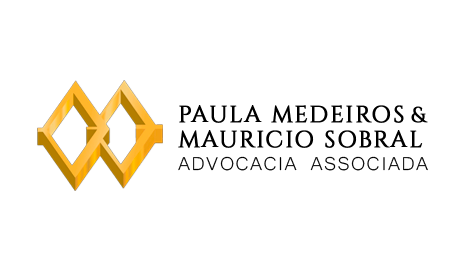21 ago 10 3: Direct Write-Off and Allowance Methods Business LibreTexts
.jpg)
The two accounting methods used to handle bad debt are the direct write-off method and the allowance method. The IRS allows bad debts to be written off as a deduction from total taxable income, so it’s important to keep track of these unpaid invoices in one way or another. It’s also important to note that unpaid invoices are categorized as assets, which are debited in accounting. The direct method treats a bad account as an expense when it’s clear that you can’t collect it and is required for federal income tax purposes. The allowance method is the other way to account for bad debt and is preferred by professional accountants as the more accurate way to handle uncollectible receivables. The direct write off method is simpler than the allowance method as it takes care of uncollectible accounts with a single journal entry.
- The direct write off method is simpler than the allowance method as it takes care of uncollectible accounts with a single journal entry.
- If you are looking for a holistic and automated tool to manage payroll, employees, expenses, contractor management, Deskera People could be the apt solution.
- After determining a debt to be uncollectible, businesses can use the direct write-off method to ensure records are accurate.
- Instead, the company should look for other methods such as appropriation and allowance for booking bad debts for its receivables.
- After trying to contact the customer a number of times, Natalie finally decides that she will never be able to recover this $ 1,500 and decides to write off the balance from such a customer.
- The business is left out of pocket with “bad debt” to balance in the books.
THE DIRECT WRITE OFF METHOD
This approach matches revenues with expenses, so that all aspects of a sale are included within a single reporting period. Conversely, the direct write-off method might involve a delay of several months between the initial sale and a charge to bad debt expense, which does not provide a complete view of a transaction within one reporting period. Therefore, the allowance method is considered the more acceptable accounting method.
Direct write off method vs. the allowance method
For example, writing off a large and material account immediately might not be proper. Let’s look at what is reported on Coca-Cola’s Form 10-K regarding its accounts receivable. Hence, the company won’t be showing the true and fair view of itsfinancial statements if the direct write-off method was used since it violatesthe basic principles of accounting. Recording bad debts through the direct write-off method affects only the bottom line of income in the current period. Notice how we do not use bad debts expense in a write-off under the allowance method. But, the write off method allows revenue to be expensed whenever a business decides an invoice won’t be paid.
Journal Entry for the Direct Write-off Method
.jpg)
The direct write-off approach is simpler for organisations with less accounting knowledge because it simply requires a single journal entry. However, it distorts revenue and outstanding amounts for the invoice’s accounting period, as well as bad debts. The specific action used to write off an account receivable under this method with accounting software is to create a credit memo for the customer in question, which offsets the amount of the bad debt. Creating the credit memo creates a debit to a bad debt expense account and a credit to the accounts receivable account.
Whether you have accounting or bookkeeping experience, our easy-to-use software records all your transactions automatically in the correct accounts. As well, all accounting data from the software’s subledgers are transferred to the general ledger. The direct write-off method does not comply with the generally accepted accounting principles (GAAP), according to the Houston Chronicle. Bad debts in business commonly come from credit sales to customers or products sold and services performed that have yet to be paid for.
Related AccountingTools Courses
Ariel would merely debit the bad debt expense account for $100 and credit the accounts receivable account for the equivalent amount using the direct write-off approach. This essentially cancels the receivable and reflects Ariel’s loss from the credit-worthy client. When customers refuse or are unable to pay money owed to you for credit sales, it’s essential to keep track of this accurately for financial reporting purposes.
It results in inaccuracies in revenue and outstanding dues for both the initial invoice accounting period and the accounting period after it is designated as a bad debt. Using the direct write off method, Beth would simply debit the bad debt expense account for $100 and credit the accounts receivable account for the same amount. This effectively removes the receivable and records the loss Beth incurred from the non-creditworthy customer. Considering the allowance method, which is the accrual basis of accounting, is the preferred practice of managing unpaid debts, there are still many reasons for a company to choose the direct write-off method. The most obvious reason is easier accounting and less work to deal with bad debt. The other popular motivation for this accounting method is reporting to the IRS.
Forensic Accounting: Definition, History & Methods
Bad debt is entered as an adjusting entry on the financial statements for the company and flows to the balance sheet. Accounts receivable can be negative if more credit is issued to clients than actual revenue collected. Sales on credit means that the revenue has been earned and recognized in the financial statements in the accounting period, but the payment for it will be received later as per the agreement.
- Reporting revenue and expenses in different periods can make it difficult to pair sales and expenses and assets and net income can be overstated.
- The problem however, is that under generally accepted accounting principles (GAAP), the method is not acceptable as it violates the matching principle.
- It also guarantees that the loss recorded is based on actual statistics rather than estimates.
- Say a digital marketing firm charges a client $7,000 for a campaign, and the client decides not to pay or can’t pay.
- It’s credited to a counter account called an allowance for questionable accounts.
- In this case, accounts receivable becomes a more accurate reflection of how much the company really expects to collect for its amount of bad debt.
It helps you make accurate tax claims for bad debt with the government and can be part of the process of keeping accurate track of money owed to you and uncollectible debts. The allowance method follows GAAP matching principle since we estimate uncollectible accounts at the end of the year. We use this estimate to record Bad Debt Expense and to setup a reserve account called Allowance for Doubtful Accounts (also called Allowance for Uncollectible Accounts) based on previous experience with past due accounts. We can calculate this estimates based on Sales (income statement approach) for the year or based on Accounts Receivable balance at the time of the estimate (balance sheet approach). The direct write off method violates GAAP, the generally accepted accounting principles. GAAP says that all recorded revenue costs must be expensed in the same accounting period.
Why is Direct Write-Off Method Not Used In the Accounting Profession?
However, the direct write-off method must be used for U.S. income tax reporting. Apparently the Internal Revenue Service does not want a direct write off method company reducing its taxable income by anticipating an estimated amount of bad debts expense (which is what happens when using the allowance method). Seeing and considering all these points, it is concluded that only being a simple method to record the transaction is not the requirement of an accounting transaction. It must be within the rules and laws framed by the bodies for an accounting of transactions so that a true and correct picture of the Financial Statements can be shown to the stakeholder of the entity. Therefore it is not advised to use the Direct Write-off Method to book for the uncollectible receivables. Instead, the company should look for other methods such as appropriation and allowance for booking bad debts for its receivables.
The direct write off method is a way businesses account for debt can’t be collected from clients, where the Bad Debts Expense account is debited and Accounts Receivable is credited. The direct write-off method waits until an amount is determined to be uncollectible before identifying it in the books as bad debt. Reporting revenue and expenses in different periods can make it difficult to pair sales and expenses and assets and net income can be overstated. To keep the business’s books accurate, the direct write-off method debits a bad debt account for the uncollectible amount and credits that same amount to accounts receivable. Bad Debts Expenses for the amount determined will not be paid directly charged to the profit and loss account under this method.



